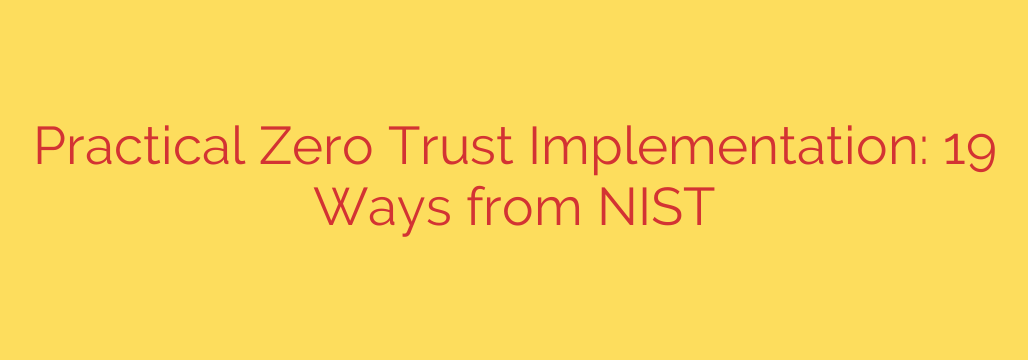
Implementing a Zero Trust architecture is fundamentally changing how organizations approach security. It’s a model built on the principle of never trust, always verify, regardless of whether the user or device is inside or outside the traditional network perimeter. Shifting to this mindset requires a strategic approach and practical steps.
At the core of Zero Trust is the understanding that trust must be explicitly granted for each access request, based on dynamic policies. This starts with clearly defining your security policies based on business and mission requirements. These policies must encompass users, devices, data, applications, and services.
A crucial element is strong user authentication. Moving beyond passwords, organizations must implement multi-factor authentication (MFA) everywhere possible. But it’s not just about authenticating the user; devices accessing resources must also be authenticated and authorized. Their security posture should be evaluated as part of the access decision.
Zero Trust mandates applying the principle of least privilege. Users and devices should only have access to the specific resources they need for a defined purpose, and this access should be limited in scope and time. This significantly reduces the potential blast radius of a breach.
Technological implementation often involves microsegmentation. This technique divides the network into small zones, allowing for granular security controls between workloads and applications, rather than relying on broad network perimeters.
Continuous monitoring and analysis of activity are vital. This includes monitoring user behavior, device health, application access, and network traffic to detect anomalous or malicious activity in real-time. Security policies should be dynamic and adapt based on this continuous evaluation.
Other practical steps include securing and encrypting data both while it’s moving and when it’s stored. Improving visibility across your entire digital environment is essential for understanding traffic flows and potential threats.
Implementing Zero Trust is an ongoing journey. It requires automating security responses where feasible, integrating security tools and data sources for better context, and ensuring a comprehensive and up-to-date asset inventory. Addressing security throughout the application lifecycle, including securing APIs, is also critical. Finally, security training and awareness for personnel are key to a successful transition. By focusing on verifying identity, validating device posture, limiting access, and continuously monitoring, organizations can build a more resilient security framework against modern threats.
Source: https://www.helpnetsecurity.com/2025/06/13/zero-trust-implementation-guide/








